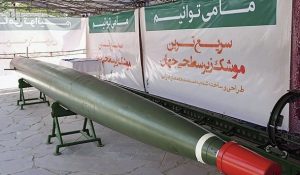Iran test fired its Hoot high-speed torpedo near the Strait of Hormuz on 7 May, three senior US defence officials as saying on the following day, like reported by janes.com.
The sources said the Hoot is still in its testing phase and could not say whether the test was successful. They said the weapon should be able to travel 12,000 yards (11 km) at 200 kt (370 km/h). There was no information on the launch platform used for the test.
Iran revealed the existence of the Hoot in 2006, when it released a low-quality video of one being fired from a floating platform.
Publicly displayed for the first during an exhibition held by the Islamic Revolution Guards Corps Navy (IRGCN) in October 2015, the Hoot appears to be identical to the VA-111 Shkval supercavitating torpedo that was developed by the Soviet Union.
Launched from a standard 533 mm torpedo tube, the rocket-powered Shkval creates an air pocket around itself, thereby reducing drag and enabling it to reach far higher speeds than conventional torpedoes. The original version does not have a homing capability, instead relying on its speed to reach its target before it can carry out effective evasive manoeuvres.



